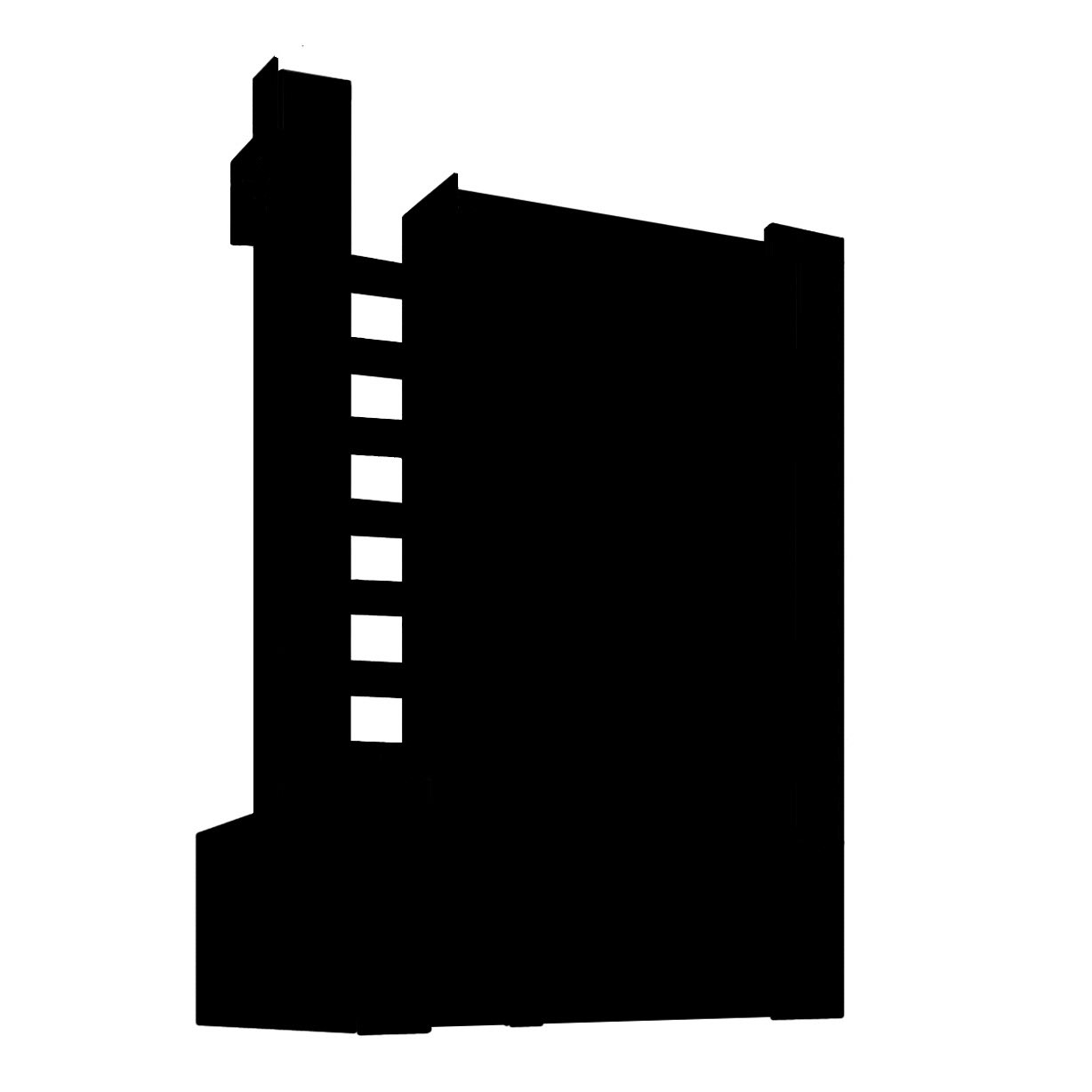Public meeting held on 18th October 2021
The residents of Trellick Tower and the Cheltenham Estate are leading a campaign to ensure that any proposed developments of the area are in keeping with the vision of Goldfinger and fully and properly informed and engaged with community voice.
READ ON FOR ALL THE LATEST PROGRESS....
"As residents of Trellick Tower, the Cheltenham Estate and North Kensington we are deeply concerned about proposals by the Royal Borough of Kensington and Chelsea for the development of the site at the foot of Trellick Tower.
RBKC’s current scheme, which they took forward to planning at the end of last year, placed two blocks (14 and 6 storeys) at right angles to Trellick Tower, splitting a vibrant and diverse community that has flourished and evolved despite decades of neglect.
The proposals would in effect erect a wall through the centre of the Grade II-listed Cheltenham Estate, a priceless social asset in one of the most deprived areas in the country, and one of the finest examples of Modernist architecture anywhere in the world, designed by renowned Hungarian architect Ernö Goldfinger.
As residents, we are acutely aware of the urgent need for more social housing in the area (many of those on the waiting list are family or friends), and most of us support building additional housing on the Estate. But many of us fear the current plans will further stretch the limited current resources in the poorest part of one of the most unequal boroughs in the country.
In February, RBKC told residents the Council wanted to learn the lessons of Grenfell, consult with the people who live on the Estate and engage with them in a process of co-design. We were heartened by the Council’s apparently positive attitude towards engagement, and local groups spent months attempting to work with the Council and architects Haworth Tompkins to try to influence the design of the scheme so that it respects existing residents and the unique nature of the site while providing much-needed additional social housing in the area.
But while the Council and the architects were willing to make superficial modifications to the design, it became clear no amount of input from local residents could persuade them to alter the fundamental characteristics of their scheme. Key recommendations in the Council’s own Supplementary Planning Document (SPD) (written with community representatives and adopted by Council in 2015) were ignored. Concerns about community cohesion, overcrowding, safety and strains on infrastructure were brushed aside.
A public meeting in October 2021
Since we raised 2,600 actual ink signatures on a petition plus the several thousand more on-line we won a debate at full council which caused them to first fast track their application with no warning and then publicly withdraw it for more “consultation and compromise“.
Currently we are waiting for their further moves while exploring our own future actions including possible legal actions such as a Judicial Review.
St Thomas Church, 18th October 2021
Full video of the public meeting held on 18th October 2021 at St Thomas' Church, with members of the local Trellick community joined by members of the RBKC Council Leadership Team.
The council proposals were later withdrawn.
Development : A Community Conversation
Morley College, 21st June 2023
As part of the TT50 celebrations of fifty years of Trellick Tower, the TT50 Steering Group invited members of the local community to the new auditorium space at Morley College, to discuss what 'development' might mean to Trellick and its communities.
A series of conversations were held exploring different aspects.
Below are the notes from those conversations. They are rough notes, captured from conversations that were prompted by the question of what development might mean to Trellick - the good and the bad and the in-between.
People spoke of their visions and their fears. People spoke of their good experiences and bad. People spoke of strategy and tactics. People spoke of the past, present and future. People spoke of so much....take a good look!
This event followed on from a panel discussion held at the Design Museum in November 2022.
The Steering Group wanted to develop the discussion to involve more voices from the community and so opted for an Open Space format.
It included discussions on the potential of Co-Design, initiated by a colleague from UCL; the place of art with a local community artist and designer; the importance of connection with a member of the Tower Resident Association; tools for decision-making and resistance with a local resident; and a discussion on heritage with an architect.
The intention now is for this discussion to further inform a community-led approach to any development in the area of Trellick Tower.
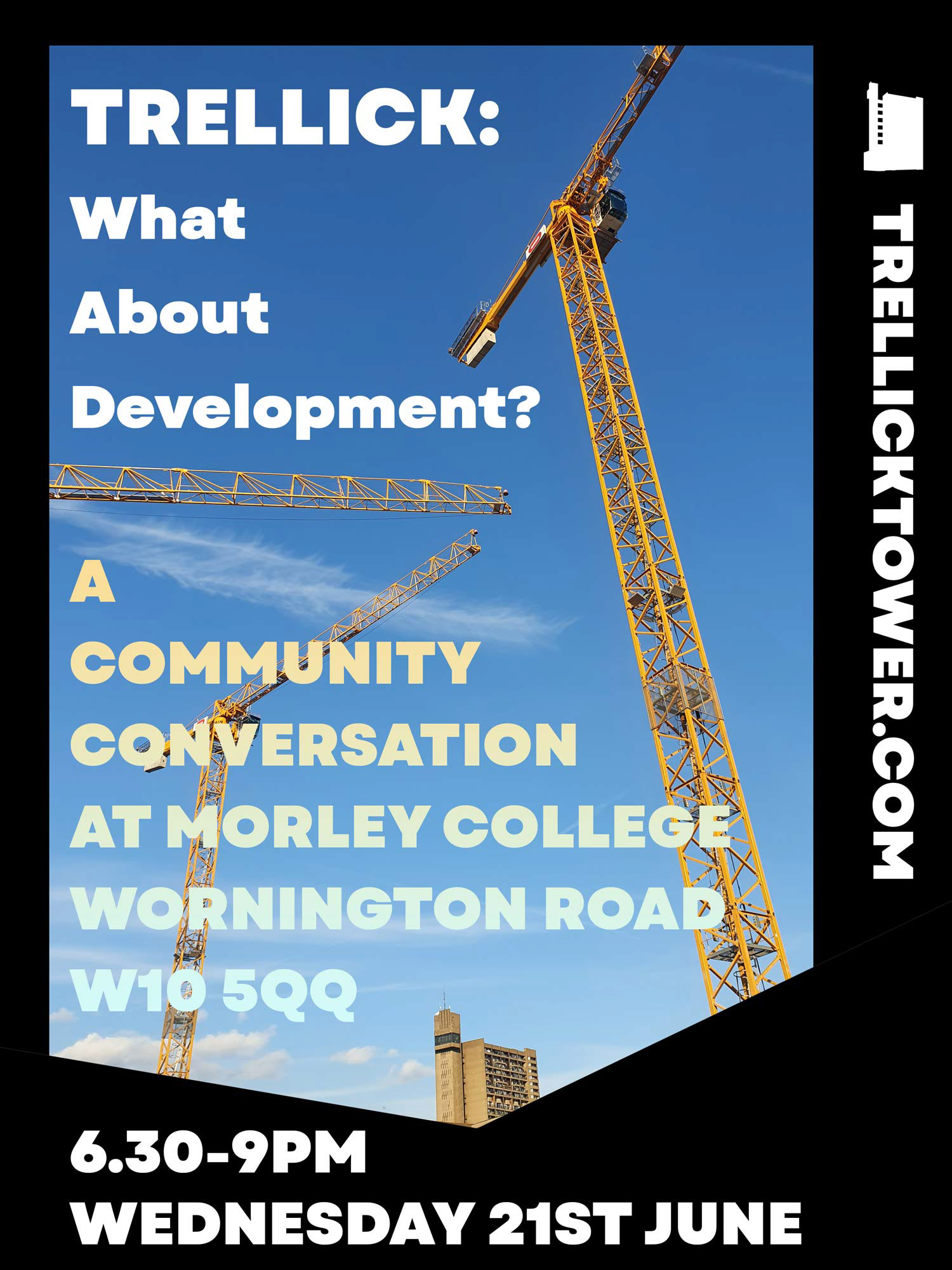
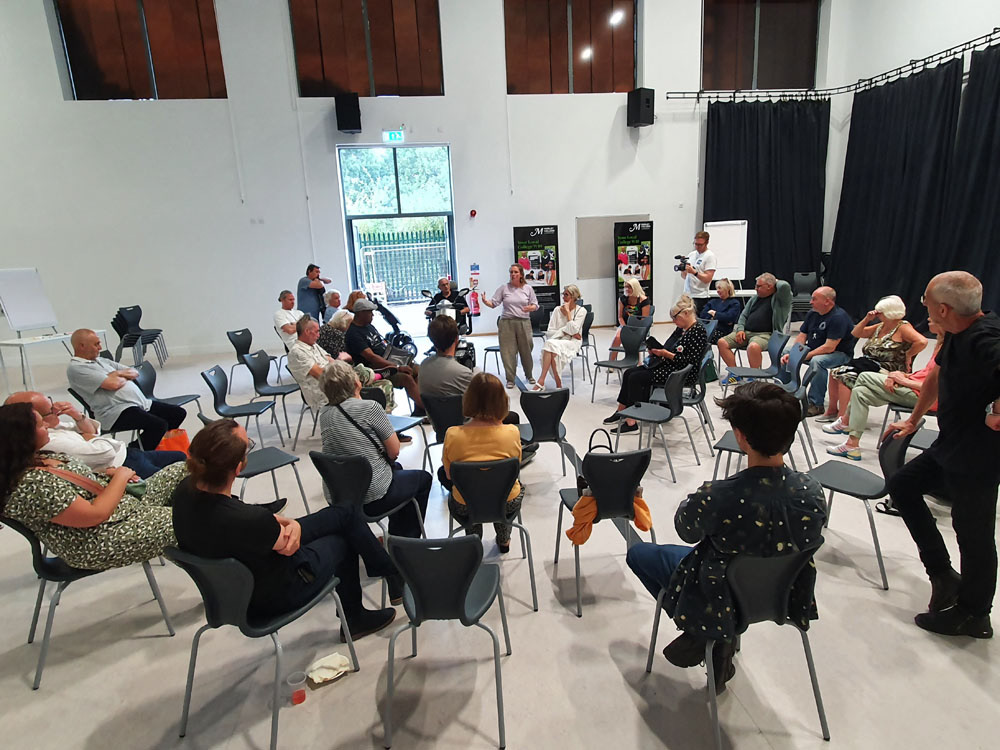
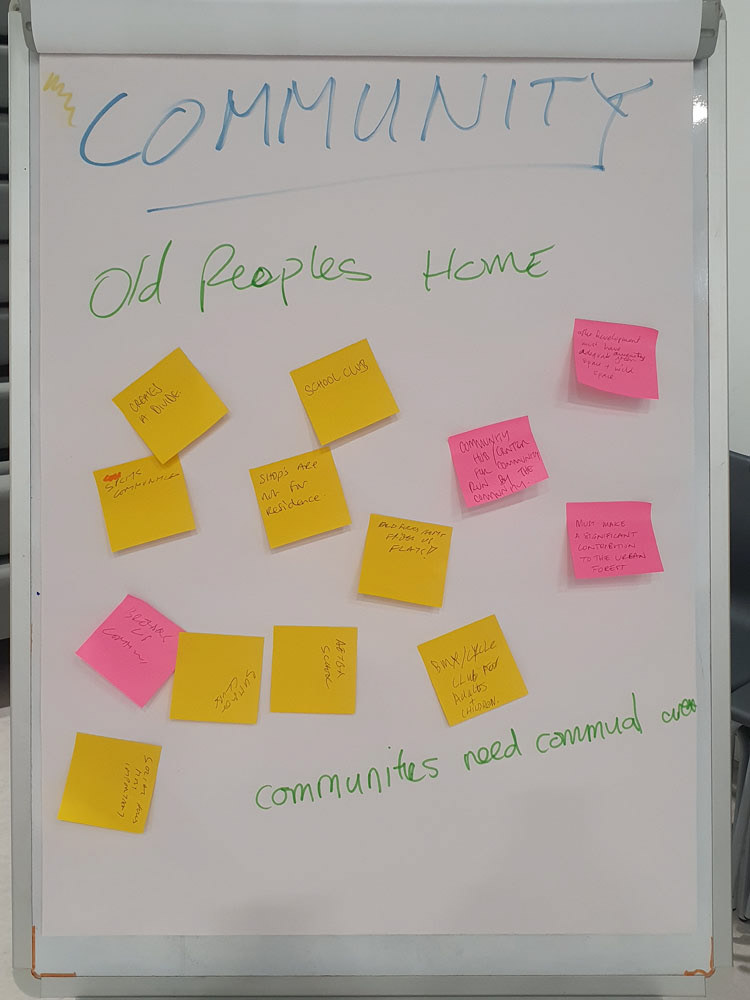
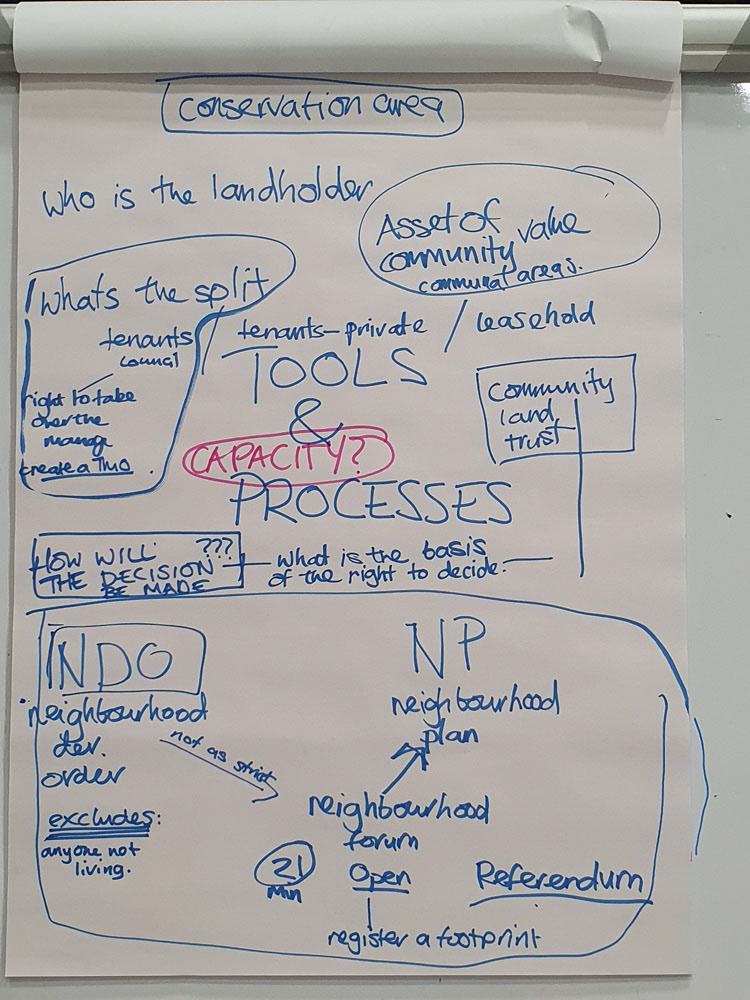
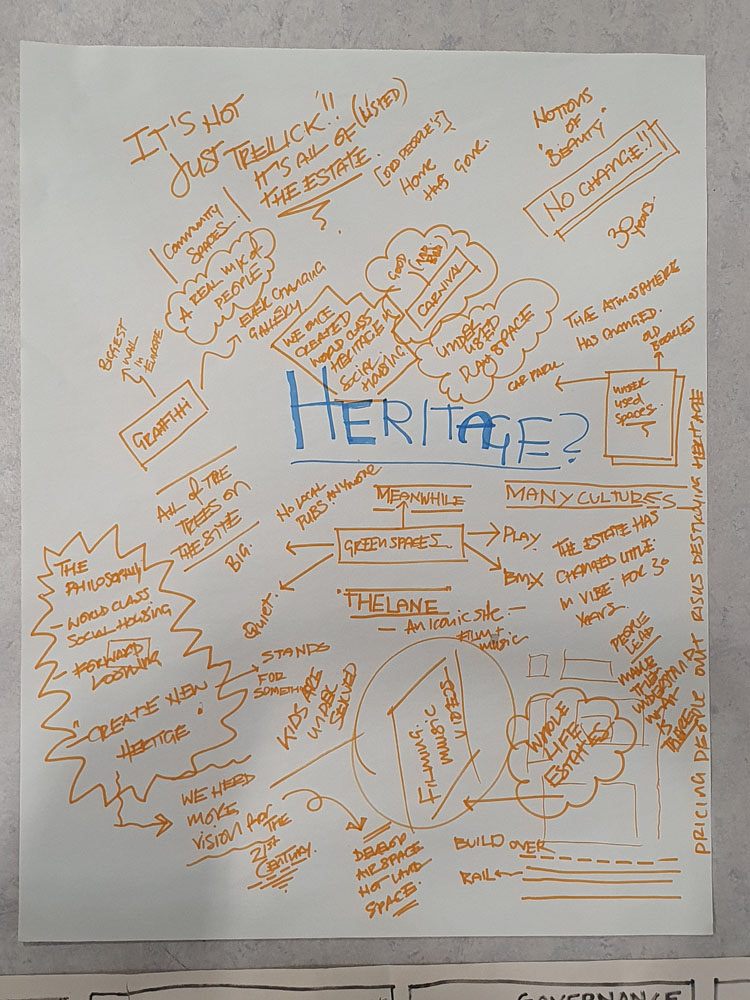
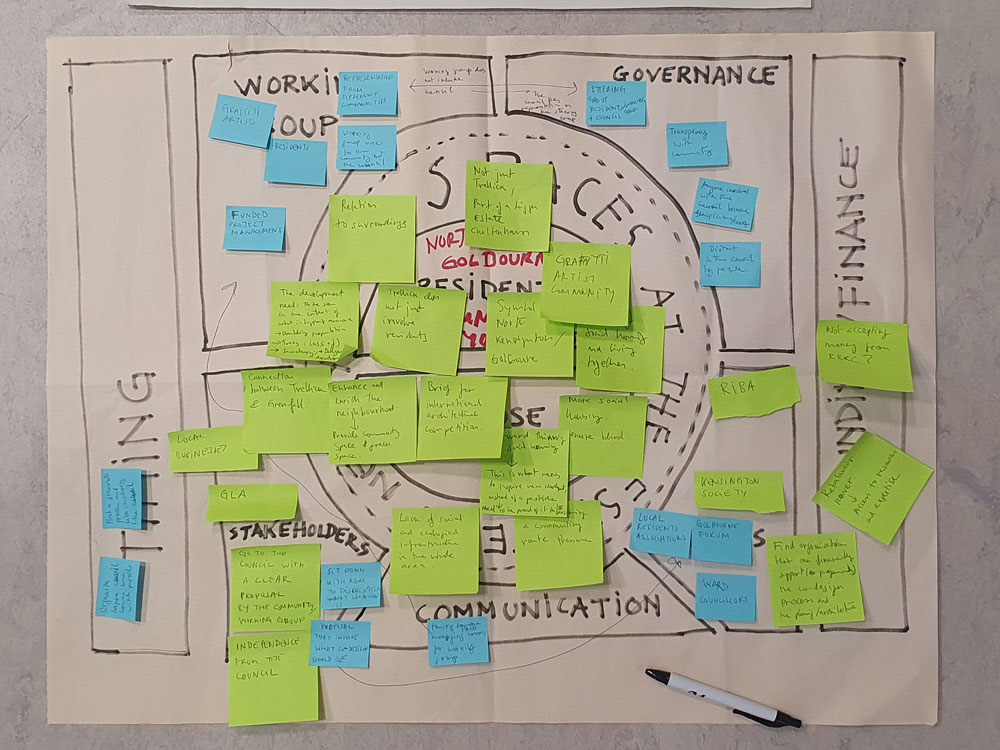
Arts, Design and Culture
WHY HAS IT BEEN LEFT TO DECLINE?
PUBLIC HOUSES ALL CLOSED IN GOLBORNE
NO LIVE MUSIC
SIZE AND SCALE OF SPACE
LACK OF GALLERY SPACE - DO IT IN COMMUNITY CENTRES
V POPULAR BACKDROP FOR VIDEOS/SOCIAL MEDIA.
WHAT DO YOUNG PEOPLE WANT
CLOSED GARAGES??
DIVIDE BETWEEN COUNCIL AND COMMUNITY
VALUES - MONEY VS MEANING
AREA OF CULTURAL IMPORTANCE/VALUE
LEGAL/PLANNING STATUS
FREE SPACE TO RELAX
KEEPING SPACE OPEN/ACCESSIBLE
CULTURE OF MUSIC SPACES - LOST A LOT THROUGH REGENERATION
ORGANIC CULTURE CREATED BY ARTS
RELATIONSHIP BETWEEN SOCIAL HOUSING AND CULTURE
TOILETS/LIGHT/SEATING
MORE FOCUS ON SPORT
A SPACE FOR ORGANISED ACTIVITY (WORKSHOPS ETC)
MANAGED DECLINE….?
THE BALFRON WARNING
WARNING SIGNS - PEOPLE MOVING
ARTS/CULTURE AS THE ‘CANARY…’
DON'T CARE FOR ART/CULTURE = DON’T CARE FOR TRELLICK
LISTEN TO GRASSROOTS
CAN YOU MOVE HERITAGE?
IMPOSING NEW THINGS OVER OLD/ESTABLISHED
HoF HUGE PART OF PERSONAL HISTORY
SPACE MORE THAN SUM OF ITS PARTS
HoF MULTIPLE USE
LAST ONE SPACE - ‘THE PIT’
MORE THOUGHT ABOUT HOW YOU MAINTAIN A SPECIAL SPACE
CONNECT WITH OTHER UK COMMUNITIES (EG MANCHESTER) SUFFERING THE SAME
RENOVATION OF HoF SPACE AS CENTRAL SPACE FOR GRAFFITI
EG STOCKWELL (PREVIOUSLY A B/BALL COURT) - ACCESS, LIGHTING, FILMING, SCREENING - WENT THROUGH CO-DESIGN PROCESS
RUNDOWN CULTURE OF HoF’S (HALL of FAME'S) ACROSS UK
LOSING LOTS OF GRAFF SPACES
CREATING SPACES SAFE FOR WOMEN AND CHILDREN/YOUNG PEOPLE
SPACE FOR BOTH SIDES OF CULTURE (OUTLAW/INLAW)
HoF (HALL of FAME) BIGGEST IN EUROPE
OPEN RELATIONSHIPS
NOT COUNCIL MONEY
GLA, INDIVIDUAL BUSINESSES, TRUSTS, FOUNDATIONS, BENEFACTORS
CLOSED DOWN BIG SPACES (ACKLAM HALL)
WHOSE MONEY IS IT??
WHAT IS THE CONSERVATIVE VIEW OF ART AND CULTURE?
ANY DEVELOPMENT AROUND TRELLICK IS PIVOTAL
TAKEN A LOT FROM THE AREA - EXACTLY WHAT?
KEEP THINGS COMMUNITY
EVERYONE CAN BENEFIT
ART IN THE SPACE CAN PROVIDE A SENSE OF OWNERSHIP - MAKING YOUR MARK.
PLAQUES FOR LOCAL CULTURE
LESS PEOPLE YOU KNOW - PRICED OUT
ARTISTS OFTEN BROKE
ARTIST/MAKER SPACES - GARAGES
Tools & Processes
Right to take over the management - create a TMO
what's the split - tenants-council / tenants-private / leasehold
conservation area
Who is the landholder
Asset of Community Value
communal areas
tenants-private / Leasehold
Community Land Trust
CAPACITY?
HOW WILL THE DECISION BE MADE ??? What is the basis of the right to decide
NDO - Neighbourhood Development Order
Excludes: anyone not living [in the tower]
NP - Neighbourhood Plan
Neighbourhood Forum - Open, not as strict
Minimum 21 people
Referendum
Register a footprint
Heritage
IT'S NOT JUST TRELLICK!!
IT'S ALL OF THE (LISTED) ESTATE.
A REAL MIX OF PEOPLE
WE ONCE CREATED WORLD CLASS HERITAGE IN SOCIAL HOUSING
OLD PEOPLE’S HOME HAS GONE
COMMUNITY SPACES
GRAFFITI - BIGGEST WALL IN EUROPE
EVER CHANGING GALLERY
NOTIONS OF BEAUTY
NO CHANGE!!
30 YEARS
CARNIVAL - GOOD
UNDER USED PLAYSPACE
THE ATMOSPHERE HAS CHANGED
OLD BOOKIES
CAR PARK
ALL of THE TREES on THE SITE
THE PHILOSOPHY
WORLD CLASS SOCIAL HOUSING
FORWARD LOOKING
“CREATE NEW HERITAGE” - WE NEED MORE VISION FOR THE 21ST CENTURY
DEVELOP AIR SPACE NOT LAND SPACE
STANDS FOR SOMETHING
GREEN SPACES
MEANWHILE
PLAY
BMX
QUIET
BIG
THE LANE
FILMING MUSIC VIDEOS
AN ICONIC SITE - FILM & MUSIC
MANY CULTURES
KIDS ARE UNDER SERVED
THE ESTATE HAS CHANGED LITTLE IN VIBE FOR 30 YEARS
PEOPLE LEAD
MAKE THEM UNDERSTAND WHAT IS THERE
WHOLE LIFE ESTATES
BUILD OVER RAIL
PRICING PEOPLE OUT RISKS DESTROYING HERITAGE
Community
The Development must have adequate green amenity space + wild space.
COMMUNITY HUB / Center FOR COMMUNITY RUN BY THE community.
MUST MAKE A SIGNIFICANT CONTRIBUTION TO THE URBAN FOREST
OLD FOLKS HOME FREES UP FLATS!
BMX/CYCLE club For Adults AND CHILDREN
COMMUNITY
[DEVELOPMENT] CREATES A DIVIDE
SCHOOL CLUB
[DEVELOPMENT] SPLITS COMMUNITIES
Shops are not for the residents
AFTER SCHOOL
SUMMER CLUBS
[DEVELOPMENT] BREAKS UP COMMUNITY
Communities need communal area
Co-Design
Governance
Transparency with community
STEERING GROUP/WORKING GROUP - RESIDENT + COUNCIL
Anyone involved with the Council became suspicious/enemy
Distrust in the council by people
The council ties regeneration on the steering group
Working Group
REPRESENTATION FROM DIFFERENT COMMUNITIES
Working group works for the community not the council
RESIDENTS
FUNDED PROJECT MANAGEMENT
GRAFFITI ARTISTS
Having someone paid managing comms for working group
Stakeholders
Local businesses
GLA
Go To COUNCIL With A CLEAR PROPOSAL BY THE COMMUNITY WORKING GROUP
Independence from the COUNCIL
Sit down with RBKC to discuss/tell what Co-Design is
Funding / Finance
Not accepting money from RBKC?
Rebalancing power - Access to resources and expertise
Find organisation that can financially support (or professionally) the co-design process and the planning /architecture
Allies
RIBA
KENSINGTON SOCIETY
LOCAL RESIDENTS ASSOCIATIONS
GOLBORNE FORUM
WARD COUNCILLORS
Timing
First a grass roots process and later involving the council
Organise before Council Comes back with proposal
Purpose
Brief for international architectural competition
Forward thinking in social housing - This is what needs to inspire new development instead of a pastiche to be proud of it in 100 years
Enhance and enrich the neighbourhood - Provide community space & green space
More social housing. Tenure blind
Residents - Golborne, North Kensington and beyond
Connection between Trellick & Grenfell.
Symbol North Kensington & Golborne
Symbol for North Kensington/Golborne
Graffiti Artist Community
Trellick does not just involve residents
Model of social housing and living together
Spaces on the Estate and nearby
Canal becoming a community route. Pressure
The development needs to be seen in the context of what is happening around
Doubling population
Trees (Loss of)
Sainsbury's + Ballymore development
Relation to surroundings
Lack of social and ecological infrastructure in the whole area
